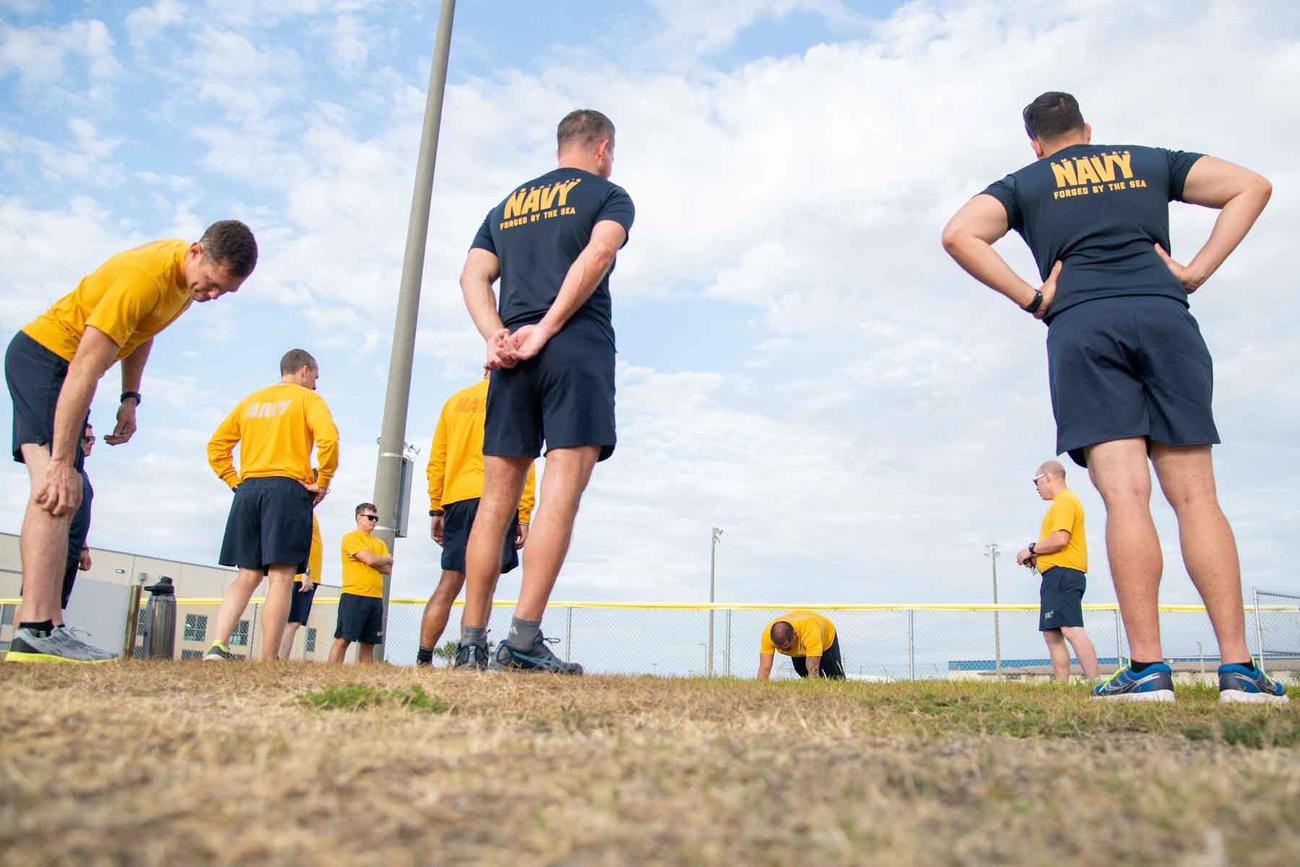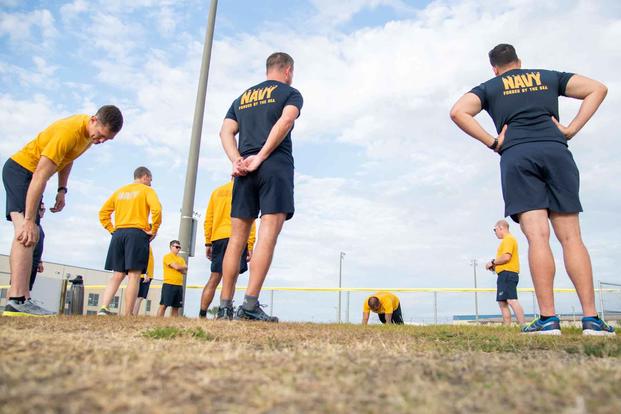

Sailors who fail two consecutive fitness assessments will no longer automatically have their Navy careers brought to an end, according to a new service policy unveiled this week.
Under the old system, sailors who failed one physical fitness assessment, or PFA, lost their ability to be promoted until they were able to pass another test, but their careers would largely proceed onward. However, failing another consecutive PFA would end a career by taking away the ability to be promoted or to reenlist.
The Navy will now allow those career-ending actions to come at the discretion of a sailor’s commanding officer instead of a fleet-wide mandate, the service said in an administrative message explaining the new policy that was sent out Tuesday.
“Commanding officers can now evaluate a sailor’s physical readiness progress or lack of progress in performance evaluations, giving them the ability to manage risk, recognize earnest effort, and best take care of their people,” Vice Adm. Rick Cheeseman, the chief of naval personnel, said in the administrative message.
The new policy says sailors who fail any PFA no longer have to have it noted on their annual evaluation — though they still lose their advancement eligibility until they are able to pass another test.
Dropping this requirement means that sailors who fail once are not necessarily forced to address it when applying for programs where their evaluations are considered, which in turn keeps them more competitive.
Meanwhile, enlisted sailors who fail their second consecutive PFA are no longer required to receive the lowest possible score in the “Military Bearing/Professionalism” category and to be denied the ability to reenlist.
Retention “eligibility for enlisted members will be at the discretion of the CO,” the memo says. In exercising that discretion, commanders should consider a sailor’s “qualification for continued service,” “their overall ability to contribute to Navy missions,” and “the likelihood of improvement in meeting PFA standards within the next 12 months.”
The change, according to the message, is part of the Navy’s push to revamp its culture of leadership and service and is an effort to modernize “our PFA policy to acknowledge our diverse population, increase sailor trust, and enhance quality of service.”
It is the latest in a series of changes to the fitness test that has come in recent years.
In February, the sea service announced that it was resetting the counter on PFA failures fleet-wide, enabling up to 1,500 sailors to keep serving.
In November, the Navy decided to ditch a postpartum PFA that new mothers would typically be expected to take less than a year after giving birth.
Ever since emerging from the restrictions of the COVID-19 pandemic, the Navy has also kept to the pandemic-era change of conducting only one PFA per year instead of two. Tuesday’s message also continues this trend into 2025.
Critics have argued that many of the changes were the Navy relaxing its standards in the face of a challenging recruiting environment and an increasingly overweight population of Americans.
Officials in Cheeseman’s office, however, provided data to Military.com in November that showed the number of sailors failing PFAs had remained very low.
According to Navy figures, in 2017, nearly 98% of sailors passed the PFA. When the service had its first post-pandemic PFA in 2022, 95.1% of sailors passed.
Those officials also noted that some changes — like having only one PFA per year — were “at the request of fleet commanders,” who told them that doing tests twice a year was eating up too much time and creating an “administrative burden at a time when [operational tempo] is high.”
Editor’s note: This story was updated to reflect that Cheeseman’s statement was included in the administrative message.
Related: Navy’s Ambitious New Effort Aims to Give Sailors Understanding of ‘What Right Looks Like’
